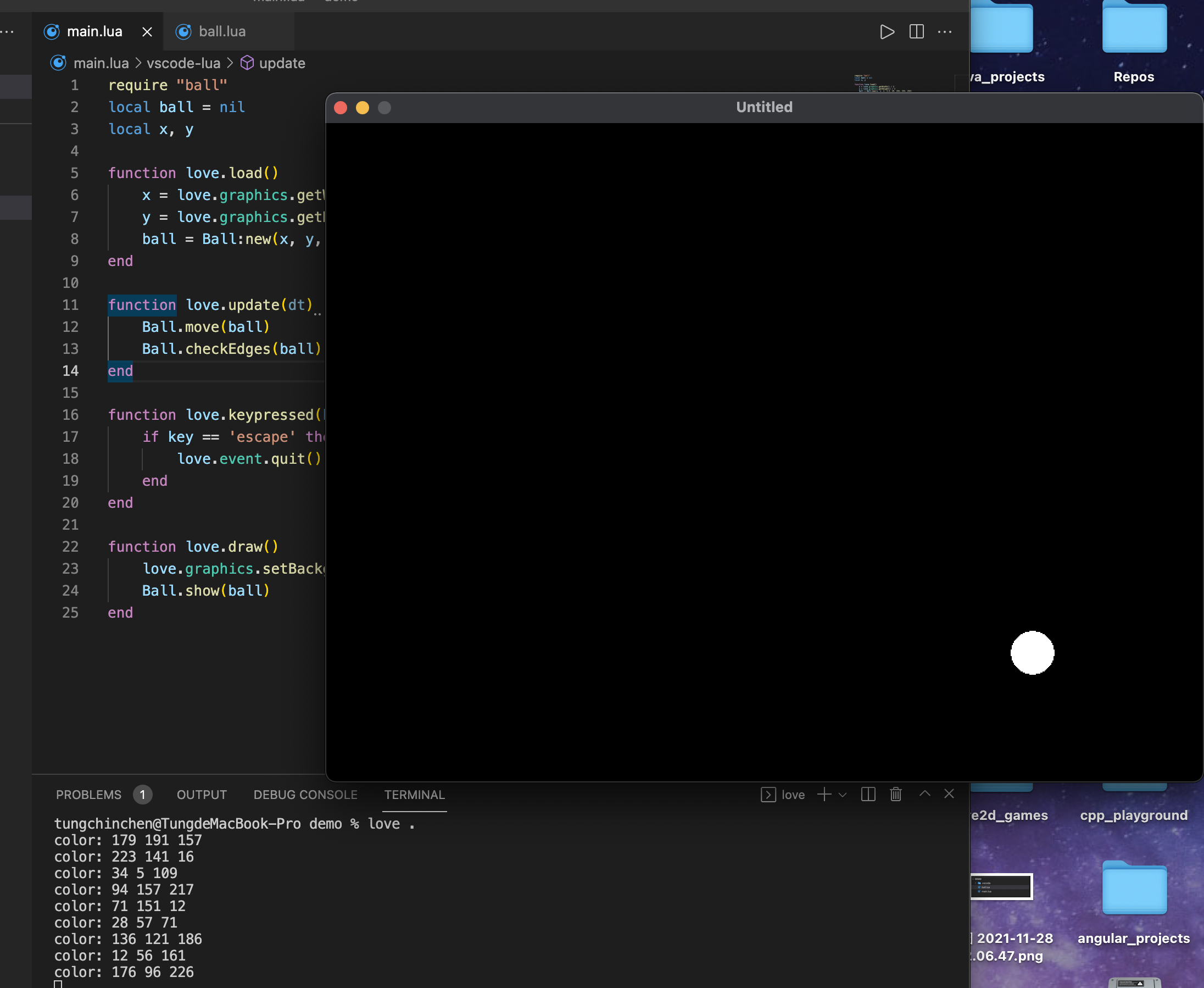So in order to get familiar both with Lua and Love2D, I code out an easy sample:
Project Struture:
demo
|-ball.lua
|-main.lua
ball.lua
```
Ball = {
x = 0,
y = 0,
xSpeed = 0,
ySpeed = 0,
ballRadius = 0,
r = 0,
g = 0,
b = 0
}
function Ball:new(x, y, xSpeed, ySpeed, ballRadius, r, g, b)
t = {
x = x,
y = y,
xSpeed = xSpeed,
ySpeed = ySpeed,
ballRadius = ballRadius,
r = r,
g = g,
b = b
}
setmetatable(t, self)
self.__index = self
return t
end
function Ball:move()
self.x = self.x + self.xSpeed
self.y = self.y + self.ySpeed
end
function Ball:changeColor()
self.r = love.math.random(0, 255)
self.g = love.math.random(0, 255)
self.b = love.math.random(0, 255)
print('color: ' .. self.r .. ' ' .. self.g .. ' ' .. self.b)
end
function Ball:checkEdges()
if self.x + self.ballRadius > love.graphics.getWidth() or self.x - self.ballRadius < 0 then
self.xSpeed = self.xSpeed * -1
Ball:changeColor()
end
if self.y + self.ballRadius> love.graphics.getHeight() or self.y - self.ballRadius < 0 then
self.ySpeed = self.ySpeed * -1
Ball:changeColor()
end
end
function Ball:show()
love.graphics.setColor(self.r, self.g, self.b)
love.graphics.ellipse('fill', self.x, self.y, self.ballRadius)
end
```
main.lua
```
require "ball"
local ball = nil
local x, y
function love.load()
x = love.graphics.getWidth() / 2
y = love.graphics.getHeight() / 2
ball = Ball:new(x, y, 2, 3.5, 20, 255, 255, 255)
end
function love.update(dt)
Ball.move(ball)
Ball.checkEdges(ball)
end
function love.keypressed(key)
if key == 'escape' then
love.event.quit()
end
end
function love.draw()
love.graphics.setBackgroundColor(0, 0, 0)
Ball.show(ball)
end
```
so basically it's just a ball bouncing around when it hits the edges.
Everything seems fine except for the function Ball:changeColor()
I want the ball to change color everytime it hits the edges, but this isn't working. is it something wrong with the function changeColor() ?
here's a snapshot of the demo:

the function did trigger and the rgb color values did change, but the ball itself didn't change color, any help is appreciated!